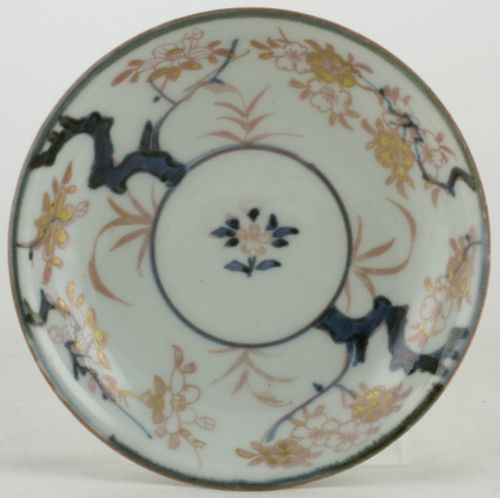
Japanese wares over-decorated in the West 18th Century - Dutch over-decorated Amsterdams Bont - Page 1
Object 2011993
Saucer
Japan
1700-1730, over-decorated in the Netherlands, Amsterdams Bont,c.1750-1770
Height 23 mm (0.91 inch), diameter of rim 116 mm (4.57 inch), diameter of footring 51 mm (2.01 inch), weight 87 grams (3.07 ounce (oz.))
Saucer on footring, slightly everted rim. Imari decorated in underglaze blue and gold. The originally blank reverse over-decorated in brown and gold in The Netherlands, Amsterdams Bont c.1750-1770. Decorated with a flower spray in a central roundel. The sides and rim with two flowering cherry trees. The reverse over-decorated in brown with leafy flowering scrolls in gold.

For European decorated oriental porcelain mostly Chinese export porcelain objects were used. Only a small proportion were Japanese.
The demand for Japanese porcelain was strong but production was restricted so here was a gap in the market that the enameller could fill most profitably by giving Chinese porcelain a Japanese look. The simplest way of transferring Chinese porcelain into 'Japanese' was to enhance Chinese blue and white porcelain with iron-red and gold to create the appearance of Imari. (Espir 2005, p.74)
Strangely the brown and gold over-decoration on this Japanese Imari saucer was intended to 'imitate' Chinese Batavia brown (Capucin) ware. It was probably done in Delft, Amsterdam or elswhere in The Netherlands.
Condition: Perfect.
Reference:
Price: € 99 Currency Converter


 create websites
create websites